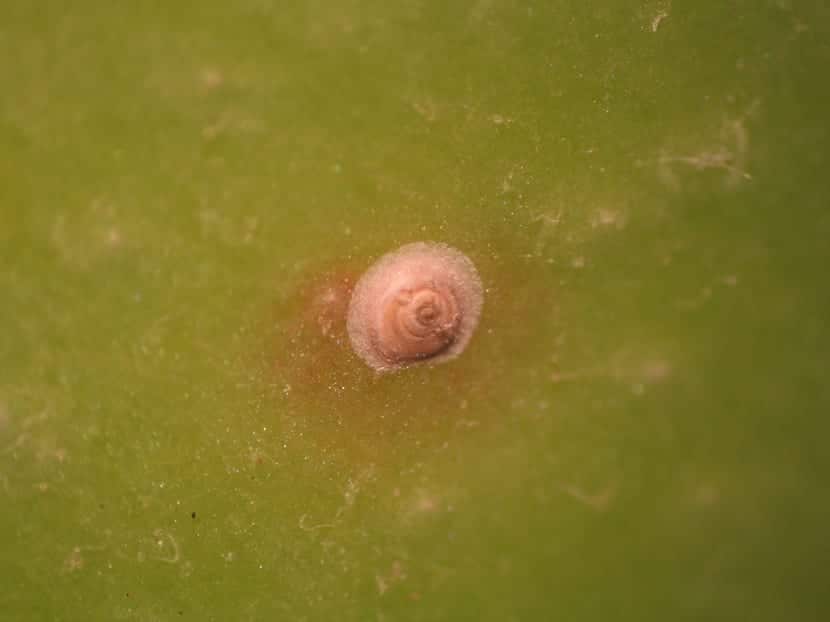
Today we are going to talk about one of the pests that usually affect more than 150 plant species. Its about san jose louse. Its scientific name is Quadraspidiotus perniciosus and most frequently attacks fruit trees that have stone. For example, the peach, plum, nectarine, almond and cherry, among others. It is a pest and is also known by the names of caspilla and pernicious mealybug.
In this article we are going to tell you the characteristics of the San José louse, its biological cycle and how you should combat it in your garden.
Key features

This type of pest is called Piojo de San José because it is in the area where it was first discovered. I know It deals with the plantations of the city of California, San José. This pest, however, is of Asian origin. It is possible that we are talking about one of the most destructive and virulent pests within the mealybugs.
There are some winter oil treatments that help control tree-spreading disease. Mealybugs act by fixing on the branches, leaves and fruits of trees with both stone and seed fruits. They do this in order to better suck the sap and incorporate it into their body as food.. This fact causes that, in a continuous way, the branches of the trees begin to dry until they are completely dry. It is a parasite but in capital letters.
One of the main symptoms that we can observe when we see a plant affected by the San José louse is that many red spots are marked on the skin that spoil the fruits.
Biological cycle

Mealybugs present three generations per year, so we have a fairly accelerated reproduction. Their larvae tend to hibernate and return to activity in spring. They reach the adult stage around the months of April and May. Depending on the temperatures over the years, this time may be earlier. If winter temperatures are generally higher than normal, they are more likely to return to activity after hibernation much earlier.
When they are nymphs they are less than 2 mm in size. They are yellow in color and are fixed to form shields. They stay in this position until, little by little, they reach adulthood. The shield is turning dark gray with lighter rings. These rings are the ones that mark the growth periods. Females have a circular shield throughout their lives, while males possess oval-shaped shields in their nymph state. Adult males are winged, orange in color and have a dark transverse band on the thorax.
When they reach their adult stage they give rise to the first generation. At the end of May and beginning of June we will have the first generation. The second takes place in good weather between the end of July and the beginning of August. Finally, the third generation develops during the end of September and can be growing until the beginning of November, as long as the temperatures allow it. In this case, the opposite occurs. If the cold takes place before, they will be developing for less time because they will begin to hibernate.
Damage caused by the San José louse

Now we are going to analyze the main damages caused by this pest in crops. Lice populations cover the branches, leaves and fruits of fruit trees as a shield. As a result of the previously mentioned suction of the sap from the branches, leaves and fruits, the harvest begins to reduce, deteriorate and the tree begins to weaken to the point that it can die. The mealybug sits on the trunk and begins to clog the stomata. These stomata are cells that plants have to carry out photosynthesis and its corresponding respiration with CO2 capture.
When these lice begin to give their bites is when they wither the entire affected area. This is because they are toxic. The intoxicated fruit reduces its commercial value because it has visible spots on the skin and the presence of mealybugs. They are placed in small and large fruit trees to make their own. If after several campaigns of attacks by this louse it is not possible to control the advance, they are capable of drying the trees completely. Unlike other pests, this species of mealybug does not excrete honeydew.
How to control the pest

Now we are going to focus on the chemical treatments that can control the San José louse species in a more effective way. The most suitable and effective treatment is winter oil, which when it comes into contact with the mealybugs creates a film layer that prevents them from breathing.. In addition, it reduces the aphid infestation.
The mobile larvae can be treated in the period of May-June-July-August and September when they begin to grow but have not yet colonized the fruit. The exit of the larvae lasts several days in each generation. Therefore, it is convenient to make two applications of pyriproxyfen, fenoxycarb, methyl-chlorpyrifos, and chlorpyrifos. The first is done when the larvae are fresh out. The second is done 10 or 15 days after its development.
As you can see, there are times when organic treatments are not feasible as they are slower speed treatments. This type of pest, such as the San José louse, needs fast treatments with high efficiency to avoid the destruction of the entire plant.